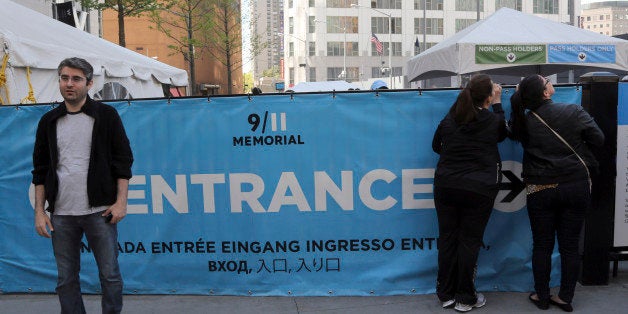
A visitor to New York City has access to a rich array of cultural resources. They come at a hefty price, though. That high cost can be intimidating for residents of the outer boroughs and for all those of limited means as well as for tourists. No -- I am not referring to theater or concert tickets which now are affordable only for the affluent elite. It is museums and civic monuments that I have in mind. The skyrocketing of entry fees is yet another sign of how American life in all its aspects is being monetarized.
When I was growing up in New York, museums were free. They along with libraries were considered public assets that existed to serve the population. Those institutions were of particular value to generations of immigrants who used them as stepping stones to assimilation and the fulfillment of aspirations. That no longer is the case. $25 is now the standard fee to get into the Metropolitan Museum of Art, $22-$27 at the Museum of Natural History. That doesn't cover special exhibitions. So a family of four who may wish to explore either has to come up with $100 -- not including local transportation of about $20 -- from Jamaica, from Crown Heights, from Hunt's Point, from Tottenville. For an adult wage-earner who is receiving the minimum wage of $8.35, that means that (s)he has to work a day and a half just to get into one of the city's cultural landmarks. Take into account withholdings from the paycheck and that means two full days of work. Outrageous, ridiculous, unfair, scandalous -- choose your adjective. Any of them is an apt depiction of contemporary America's distorted values and cavalier disregard for the well-being of its poorer citizens.
What of the 9/11 Museum on the site of the World Trade Center? $24! True, the memorial itself can be visited without charge -- but not the museum. If you can't afford the full act of devotion at this votive site, you can always turn on your TV to a football game and stand at attention when they troop the colors and play the Star Spangled Banner.
These exorbitant fees are justified by reference to the exigencies of the new "age of austerity." But the United States is today richer than it ever has been, according to official statistics. The endowments of cultural institutions climb to new heights -- even if public moneys do not. The simple if unpalatable truth is that their directors, their boards of trustees, city officials and the political class as a whole have a different set of priorities than they did half a century ago. It no longer is about serving the public. Nowadays, it's aggrandizing the organization, enhancing its prestige and visibility, creating greater career opportunities for those who run it, and, therefore, emphasizing the bottom line. Blockbuster international exhibitions memorialized in ostentatious catalogues and inaugurated at gala donor balls are dearest to the museum director's heart. These institutions' leaders act as if they possessed them rather than serving as custodians of a public trust. (Joe Daniels, President and CEO of the 9/11 Memorial and Museum, earns $371,307).
The same phenomenon is visible across American society. Universities, foundations, charities -- not to speak of government agencies -- are used to advance personal power and prestige at least as much as to perform public functions. Traditionally in this democratic and avowedly egalitarian society, institutions were never viewed as belonging to those who lead them -- to be disposed of according to the will and inclination of managers or governors. Leaders were supposed to act in the collective interest of all those who have a stake in the institution's performance.
Consequently, it follows that office-holders, directors and managers are authorized to exercise their proper powers within a set of constraints. Empowerment comes with accompanying limitations that are designed to ensure that the functions of leadership are performed in a responsible manner. It is a fiduciary responsibility in a broad sense.
The virus of arbitrary leadership has spread as far as America's great universities. To anyone with direct experience of how matters of consequence are handled in today's citadels of academe, the shift away from some approximation of a consultative approach on major policy issues is striking. The phenomenon may not be universal, but it is widespread and growing. So, too, is the haughty attitude of senior administrators that the institution's well-being is their affair as proprietors who have the right to choose whether to deign to seek the advice or counsel (almost never approval) of those in whose name they administer. Faculty increasingly are viewed as staff, staff as hirelings and students as customers/product.
What aspects of university life are the targets of arbitrary action? Just about everything: tuition, faculty/student ratios, a shift to temporary/part-time faculty, responsiveness to allegations of rape and other offenses that could endanger the school's reputation and thereby revenues, the "privatization" of staff functions to cut expenditures to the bone, what levels of political activity on campus will be tolerated, etc. (Some adjunct professors have had their contracted teaching hours cut so as to disqualify them for institutional health insurance mandated by Obamacare). It is a rare institution where a serious effort is made to involve faculty in the process of deliberation and decision. Staff almost never.
There are very serious practical consequences to this mindset and pattern of behavior. University leaders preoccupied with their personal authority and emoluments are not inclined to become vocal plaintiffs before legislatures, governors, boards of trustees or the public -- leaders who strenuously protest the progressive abandonment of higher education. Today, in the University of California system students must cover a larger fraction of their educational costs than does the state, roughly $16,000. In the 1960s BR (before Reagan), that same education was free. This is a revolutionary change, matched across the country, that extracts a heavy toll on students -- especially those from families of modest means. They have limited choices: stick with cheaper state colleges or community colleges, incur heavy debt on onerous terms (and therefore think above all of future earnings when choosing a career), or work part-time. Many combine these options with an attendant decline in graduation rates. Yet, it is standard these days for university administrators and boards to exhort students to complete their degree sooner and to "cut down on the partying." Of course there is partying -- much of it associated with university promoted sports events. The "partying" for millions of other students amounts to working 20 or 30 hours a week.
I know of not a single university president who has spoken out loudly and clearly about this sorry state of affairs and its implications.
President Obama personally has taken the tighten-your-belt line. He has threatened universities with cuts in federal spending if they don't hold the line on tuition -- without mentioning that tuition is rising due to the drastic reduction in the level of public funding (while faculty and staff salaries stagnate). In addition, he has set as a criterion for evaluating universities the earnings of graduates. The implicit message: it's the money that counts -- not whether a career or job is fulfilling and contributes to the welfare of society. Go into finance or "consulting" and forget about government service or NGOs. Indeed, that makes a certain utilitarian sense if you want your kids to afford a visit to the Metropolitan Museum of Art or to pay homage at the 9/11 Museum.
